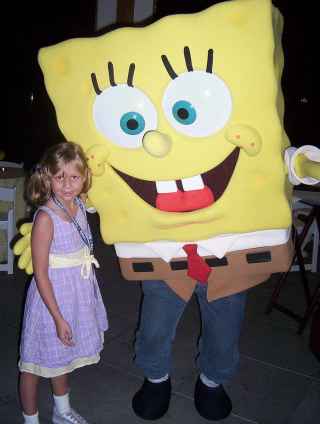Survey Says: FUN!: Blurring the Lines between TV and Casual Games
Christian Meyer, CMO WorldWinner & SVP Marketing, GSN Digital WorldWinner/GSN Digital
WorldWinner is in a unique situation in that they work with the Game Show Network (GSN). This collaboration is really blurring the lines between television and casual games. Television delivers emotion. In turn, emotional motivators can be studied and you can change behaviors.
GSN game shows are essentially casual games on a different platform. People watch game shows on television to have the buy in experience. They want to see if the little old lady from Pasadena wins or loses. GSN can reach up to 66 million homes because of its reach through cable television.
Time is the new currency of technology. Where does casual gaming fit in? The top three activities women spend their leisure time on is television, Internet, and reading a book. Men watch television and play on the Internet. Over a third of the people using computers say that they're starting to eat into television watching time. The average user will use the personal computer for entertainment 12 hours per week.
Isn't there a symbiotic relationship between television watching and the Internet? Yes! More and more television content is starting to show up on-line and it's important to keep up with the consumer demand for content on the Internet. The music industry did not keep up with this demand and has become badly hurt because of it.
Gaming is now a part of television sites. Lifetime advertises "Play Here" and has female oriented content that drives viewers to their site. USA has developed a very socially oriented site with the "Characters Welcome" tag line.
The gap between television and the Internet is getting smaller and smaller.
Competitive entertainment are the key words that WorldWinner focuses in on because one out of two telecasts revolve around competition related programming. Out of 191 million adults, two-thirds are already playing casual games. They play casual games to stimulate their brain, to have fun, and to take a break.
What will draw a casual gamer in? WorldWinner found that people want to be able to win money and play games that they know and like.
Bingo, the GSN game show, allows the whole audience to play and participate. People go on-line to download Bingo cards so they can play along with the players on television. The television ratings were not explosive for this show, but the on-line registrations exploded with registrations of 60,000 cards per night in shows that were repeats.
Catch 21 existed on-line before it was translated into a game show on GSN.
WorldWinner tries to develop forward leaning entertainment. The best way to describe this is that it is competitive entertainment. Travelocity allows you to book your vacation. Priceline allows you to WIN your best price.
The Business of Peggle
Dave Roberts, CEO of Popcap Games
Dave had just returned from a trade-show in China and had never before witnessed the over-the-top spectacle that is a Chinese press-conference.
Popcap is based in Seattle, with a mobile studio in Dublin and another development studio in Shanghai. The standard myth is that it takes three people and $25k to make an enormous profit. While this may have once been the case, it's not that way any longer. Another myth is that casual game development is somehow easier than a triple-A title. A third myth is that the games are necessarily designed with a 40 year-old woman in mind, classing the whole shopping/baking game genre as "panderware". The fourth myth is that once a game is produced that it is a lifetime income stream. Fact is, casual games do have a lifetime and the income stream does eventually go to zero.
2007 industry trends
-
Content as commodity
-
Lack of new IP
-
Increased production values for its own sake
-
Slow new customer growth
-
Price pressure
Peggle was launched February 2007, and it was the first franchise and original IP they made in two years since Chuzzle in 2005. The game has a Pachinko-style mechanic. Peggle was an expensive product, three years in production with 3-6 people developing and a total budget over 1 million (PC+Mac) and an additional million for other platforms.
Peggle's initial sales were strong, but they dropped off significantly early on. The portal presence was very strong intitially, and the product did eventually recover and it pulled in strong revenue months later.
Popcap.com is a good resource for them because the site and the brand has a loyal following. Not unexpectedly, they had a huge spike at the beginning from loyal users waiting for the product to launch.
PR was a long-term effort. It wasn't a matter of a big push at the beginning and then watching the money roll in. The PR effort was constant for a year, and it paid off in some very high profile reviews and profile.
Mac was also a good payoff. It's a much smaller market, but the Mac users are hungry for new content and bought the game in higher proportions. Another success was leveraging new distributions, specifically Valve/Steam, as well as a crossover "Peggle Extreme" aimed at Half Life fans. Sales of the regular product increased quite a bit from the Steam players following the crossover game.
Web games for Popcap are an awareness tool rather than a revenue generator (ads). The web game version increased the downloads of the full game quite a bit.
Another success was the iPod version. It was more than a "port" or an afterthought. It was a new product intended to leverage the hardware of the iPod (specifically the scroll wheel) to its advantage.
Retail distribution is a pain and is expensive, but it can be great if it works. People in general have a comfort factor with a box and a CD that they don't get from a download.
Mobile versions are on the horizon. The potential revenue is very large, but the hurdles are large and difficult.
Major show announcement - Peggle for the Nintendo DS. It'll be available this winter along with two other Popcap games.
Success relies on multiple platforms and distribution channels. You must leverage more than one to succeed.
Better gameplay is important, and a badly-playing game will come back to bite you one way or another.
A Deep Drink From The Fountain of Eastern Europe and Russia
Tatiana Chernova - Alawar Entertainment
Eastern Europe develops around 30% of casual games, and it should now be looked at as a very viable game market and not just a place that's cold. Russia, Ukraine, and Belarus are the largest developers and consumers of casual games in Eastern Europe. In 2008 about 3.5 million casual games will be sold in Russia with revenues approaching 30 million, despite the market not even existing prior to 2004 because of the poor economy of the region.
Moscow and the Volga area are the largest markets in Russia. Internet users in Russia will reach 50 million by 2010. One in five internet users in Russia play casual games. Unlike the US where casual games skew to an older market, Russian casual games skew towards middle age (office workers) and children. People over 40 tend not to use the internet, so it's a young people's market there.
Credit card penetration in Russia is very low. Payments via SMS are the primary way to buy casual games in Russia. Up to 96% of casual game sales are handled this way. Since SMS payments were made available, the commercial casual game market grew by 25x.
The cold climate of Eastern Europe does affect casual game sales, as the sales of casual games in Russia tend to be seasonal, and people tend to "hole up" in the winter and play games. Game prices in Russia hover around $8 (including VAT), although this is expected to rise until the norm is around $10.
Most popular genres are Time management (Farm Frenzy, Build-a-Lot, Supermarket Mania, Jenny's Fish Shop), and hidden object games (Treasure Masters Inc).
While people will buy English language games, there really is value to localizing your game. And it's important that the release-date of your localized game be near the release of your English version. If your translated version lags a year or more behind the English version, it likely will not be a success.
Alawar.com controls about 85% of the casual games market in Russia.
Software piracy is a problem, with piracy being the norm rather than the exception. The SMS system has made things better by making purchases more convenient. Piracy was largely a problem in the past because easy methods of payment were simply unavailable.
Going International - Entering New Markets: What to Do and What to Avoid
Luis Ongil - CEO GameDuell
Most of the growth in casual gaming (80%) is occurring outside North America. The games themselves translate well.
Payment is an important factor. Every country has its own favorite payment method.
Every market looks at things different, culturally. Ads in the US show people experiencing the product rather than the product itself. For example, iPod ads outside the US don't show the dancing silhouette people, as many locals didn't understand what the product was.
User conversions differ. The funnel from the product presentation to the actual product purchase is longer outside the US. It's important to give users a longer presentation before ushering them into paying for your product. Click-throughs are higher in less-developed markets. User registrations are quicker too.
Email rules and regulations are different from country to country, especially regarding spam. Make sure you research the laws regarding email before you start sending them out or you'll find yourself blocked at best case.
You need to localize your customer service. Not only regarding language but also the logistics. People in Europe are more likely to contact customer service if they have a problem rather than toughing it out.
Localized payment methods are required and work in different markets. Whether your payment system is debit, credit, prepaid card, SMS, or even an offline bill-paying kiosk, you must research your requirements prior to launch. Make sure your provider accepts cards and methods from different countries.
When going international, you must plan before you start or you'll run into problems later. Know your markets and what markets you plan to target before you move into them. Even things you'll take for granted like the appearance of card-faces should not be assumed because they look different depending on your country.
Ways to internationalize
-
Build a subsidiary in the target market. Let the company license your product and handle the fulfillment and support.
-
Do everything from the headquarters. This is feasible if your company is in Europe and you want to target other companies in Europe. You will gain economies of scale, but you will lose local knowledge.
-
Build a remote branch and branch to the neighboring localities from that.
Why go international? The question should really be "why not?" Pay attention to your cultural differences, payment methods, how you will expand to that market, and how your game will work internationally as a ground-up process rather than something that's added on at the end.
An Easy Kind of Love: Game Design Fundamentals for Casual Games
Eric Zimmerman, Cofounder and Chief Design Officer of Gamelab
There's a "pass out the cards" exercise. "Massively Multiplayer Color Matching Game", which was just a quick game where adjacent players traded colored cards until five players had the same color. It was just a quick exercise showing an emergent behavior. Emergent behavior existed on multiple levels. The game mechanism required tuning but the play facilitated new rules and improvements.
Game design is not programming and takes place on and off the computer. Game design is important, although most small projects don't have an explicit designer. The role is shared between programmer, artist, etc. The business model is part of the design process, as the experience must be structured to fit the model.
Game Design Fundamentals
-
Rules and play
-
Games as systems
-
Meaningful choices
-
Game goals
-
Social play
-
Playing outside the game
Hardcore games - complex interaction. Long time to learn and play. Gamer-oriented content (science fiction, military, etc). Casual games are the opposite, simple interaction, quick to learn and play, and more accessible content.
Simple rules can lead to a powerful system - tic tac toe.
Meaningful choices in games. What is a meaningful choice? What is the activity that's actually involved when making a meaningful choice?
To echo the Popcap CEO, the design of something simple is more difficult than the design of something complex. Aiming for something simple and elegant is not an easy process. Complex behavior emerges rather than presents itself all at the beginning.
Anatomy of a choice.
-
The state of the game is represented (chess board)
-
The choices available are represented (all of your available choices are shown)
-
The player makes the choice
-
The choice affects the game system
-
The result of the choice is represented by the game as a new game state
Actions lead to outcomes and the actions must be meaningful to the outcomes. The decisions should not feel arbitrary.
Sometimes the little sparkles and eye-candy may seem pointless, but they can underline the effect of a player's decision and are therefore meaningful.
Conclusion - Game design is an easy kind of love, and it makes for a more playful world.
Debugging: Discover, Diagnose, and Dispatch
These are all free tools that are available for you from Microsoft, and they can solve a lot of problems.
Discover
-
find the problems before your testers do. The compiler and preprocessor is your friend, so leverage your warning level (-W4) to find bits of code that are a problem. Also use -WX to halt on warnings and force yourself to remove the warnings. Also use RTC and GS.
-
SAL isn't just your friend's name. It tells the preprocessor what your intentions are so it can block requests that you don't want to do, and it can often find problems before your code is even compiled. Pre-fast (a free tool available in the WDK and /Analyze in enterprise versions) leverages them by default. It's free but doesn't ship by default with the compiler (it's a legal thing), so go get it and use it.
-
Use unit tests. Even the act of writing unit tests can ferret out bugs, so don't neglect them.
-
Debugging tools for windows (WinDBG/NTSD/CDB/KD) are all available via MSDN. WinDBG looks pretty rudimentary like a holdover from Win 3.1, but that's intentional because it has almost no DLL dependencies and runs minimally. CDB is a console-mode debugger, and KD is the hardcore debugger for kernel and device-driver writers. Also take a look at all the related CHM files that come with the debuggers, as they have some useful tips in 'em.
-
A driver verifier has shipped with the OS since Win2K, so take advantage of that.
-
Application Verifier - run your app under the debugger during development and not just testing. Application verifier can show off problems that won't show up otherwise.
-
Application Compatibility Toolkit - Standard user analyzer (SUA).
Diagnose
-
Initiating an application debugging session - check your .srcpath .sympath, !symfix and .reload, as getting the symbols to match up so you can see where the problem actually is is always job one.
-
The first steps in root-cause determination !analyze -v - identifies common crashes and can point you in the right direction as to your problem.
-
Commands and tips - ? (dumps all commands) ?? (C expression reevaluator so you can predict behavior) k (family of commands to dump the command stack, has loads of options), b (family of commands to set breakpoints)
-
Blue Screen of Death - caused by someone in ring zero doing something evil, which is rarely a problem for game developers as games by and large don't run in ring zero.
-
Code defensively. Use things like StrSafe and IntSafe to watch for overflows and rollovers.
-
Use UNICODE as appropriate.
-
Use thread-safe "interlocked" API's and make sure your public API's are thread-safe as well. Make your libraries thread-safe even if you are the only user and you intend for your library to be single-threaded, as you never know how things will happen in the future.
-
Trust no arguments, including your own.
Dispatch
-
Code reviews aren't just for showing off. Like history, not being aware of a bug will make it your destiny that you will repeat it.
-
Share your techniques and tools with your team.
-
Include code coverage reports in your reviews.
-
Participate in your community. There are a couple of public groups for Microsoft debugging (microsoft.public.windbg) as well Open Systems Resources forums, specifically NTDEV and WINDBG.
Call to Action
-
Do not allow your team to check something in without -W4 and -WX
-
Leverage contemporary API's
-
Leverage verifiers in testing and development.
-
Don't overlook the application compatibility toolkit
-
share the experience.
I wish I were a casual game developer
Michael Capps, PhD, President of Epic Games
Michael Capps, the president of Epic Games, announced that Epic just purchased Chair Entertainment, a casual games developer. Capps admits that he doesn't' know much about casual games, but sees the franchise as a renaissance of game development
He went around to his Epic employees and asked them, "What are casual games?" The answers he received varied from "games for chicks", to "game development purgatory". Another description used is "AAA games are movies, casual games are TV"
Capps best answer to what a casual game is, "I know it when I see it."
Casual game developers are making money and having fun while doing it. Lots of original minds are coming back to market to make casual games precisely for that reason.
Why?
Casual games can be done in small teams who can focus more on fun and short development schedules than graphic monsters. Short development cycles can help a developer to remain passionate about the game.
Capps said that opportunity is a deadly thing as he felt that Epic is a victim of its own success as they are tied to a successful franchise and have trouble with experimenting because the field is so competitive.
He wished that games would compete in fun per minute, but the AAA games compete in visuals, the hours of game play available, and the numbers of weapons available to the player. Imagine if movies competed based on length.
Games have been selling for $59 each for a decade but game development budgets have increased 10 to 20 times in that time. Total revenue and gamer population has not significantly changed during that period, either.
Capps admitted that there's an arm race going on in the AAA games. Epic Games has to constantly trying to survive as players want to buy the most and best guns.
The casual games development process really emphasizes minimizing cost and effort and it is an exciting problem to have. Since the projects are smaller in scope, the programmer has more of a sense of responsibility as casual games tends to have one programmer. AAA games requires many different types of programmers who end up specializing and work on specific parts of the games.
So how does Epic learn from casual games?
Epic's future must be a mix of their start-up past and their current blockbuster-studio present. Capps believes that they need to keep as small as possible. That is a real balancing act. They need to be just small enough to be able to be nimble to create intellectual property (IP) and big enough to develop it. Epic saw that Chair Entertainment had these qualities, so they were bought so they can learn from the casual games company.
Capps then stressed the importance of building a franchise. A franchise goes beyond just creating a game. It's about developing robust IP that's compelling, open, and deep. It's important to support the IP as it's the most important thing. There should be numerous anchors that players can relate to.
For example, in one of their games, Epic has two different types of vehicles: a hover craft and a jeep with a gun turret. Of the two items, the jeep with the gun turret was far more popular than the hover craft because players had expectations of how a jeep works but nothing for them to relate to how a hover craft works. Adding the gun turrets to the jeep helps to exceed the players expectations. Meeting and exceeding player expectations are important. In Epic games, guns are guns. You will not find any crazy laser weapons in their games.
It's important to establish a brand. Epic did this with Gears of War and have the following themes
- Destroyed Beauty
- Humanity's last stand
- Nightmarish horror
- Never fight alone
- Marcus is the lead
They created an icon of a gear with a skull inside and really worked on creating a visual identity. Capps then showed us a poster of Raiders of Lost Ark and spoke about how we identify with what the movie was about just by looking at the poster. Epic worked on their final visual identity that incorporated all the themes above. Capps also showed us some of the art work that was considered and pointed out why they didn't fit within the themes identified above. One iteration only showed Marcus - but that violated the "never fight alone" theme and was discarded.
It's also important for a game developer to maintain control, both internally and externally. You must look at how you are going to work with your partners and with your internal teams. Capps gave the following advice maintaining your vision through execution with publishers, licensors and internal teams: It's easy to tell stupid people they're stupid. It's hard to deal with well meaning people who disagree with you.
There are six steps Capps outlined that has contributed to the success of Epic games.
Step 1: you must build a reputation. Don't lie, cheat or steal. Everyone says that they want feedback, but they really don't mean it. It's important to try giving feedback anyway. Be credibly willing to walk away from a deal.
Step 2: Have balls. Epic gets good deals because of their reputation and solid track record. They have pushy creative negotiators and are able to influence hardware based on their reputation.
Step 3: Assume everyone is wrong. It's very important to not just listen to the conclusions but to also ask for the data from testing, user testing, and market testing. Capps has been able to find
errors in the conclusions by looking directly at the test results. It's also important to audit your financial partners. It is a game business not game "friends". Auditing is neither rude nor
offensive. Epic has found genuine errors and improved efficiency in their relationships with their financial partners through the auditing process.
Step 4: Be consistent. Argue in-house first so you don't send mixed opinions and stick to the franchise vision and philosophy. Capps cited their policy to have no lasers in Gears of War as an example. Explain any changes in the vision very clearly
Step 5: Take responsibility. Your partners have a role and they should play it. You have the most to lose so really all roles are your responsibility. No one cares why you failed, or whose fault it was. If your partner isn't performing it is time for honest feedback. If they don't fix it, find a new partner. In the meantime, start doing it yourself.
Step 6: Listen to smart people. Capps said that Epic has found there are some publishers/partners who are neither stupid nor evil and they really do bring something to the table.
In conclusion, Epic Games is now a member of the casual games industry and will be bringing the lessons learned in the AAA game industry with them. Capps said it is important for casual game developers to start creating franchises - not just games. He also gave the advice to not be afraid to take control of your games.
A look at PlayFirst
I met with Craig Bocks, the Senior Director & Executive Producer for PlayFirst. PlayFirst is better known as the publisher of such games as Diner Dash and the more recent Chocolatier series of games. Their games can be found on various sites that are available for limited 60 minute play with the option to purchase the game after the trial period is over. Bocks said that the real strength of PlayFirst is their ability to develop very rich story worlds that allow their players an immersive experience. Since they have well developed story worlds, it also allows the game players different types of game play experiences in familiar environments.
Another element to the PlayFirst on-line presence are their forums which allow players to interact with each other. Developers also use the forums for players to give them feedback. Players can learn about new games and when they'll be released. A new beta site has been developed which is geared towards educating inexperienced players. It is informally called "Tips" and is an answer to a problem that occurs when a player is stuck and has asked for help in the forums. It's very easy for the answer to become buried in a forum thread. The idea behind "Tips" is to have a place where a player can specify a problem and have other players answer their question. When the most succinct answer is found, the topic is closed. The beta site will allow a player to earn an elevated status through the awarding of points on the site based on the how much content is contributed to the site.
PlayFirst is located in San Francisco and has three design studios. There are around 5 to 6 game designers, who are essentially like the authors to a book. They come up with the game story worlds. A producer is the person who makes sure the product is finished, or the project manager. And there are various art teams and engineering teams that work on parts of the product to make it whole. Not all of PlayFirst's production is done in the design studios. They also hire third party companies to help with the pieces. Company sizes that they've used in the past vary from a small 2 to 3 person company to one that employs over 100 people.
Recently, PlayFirst released The Great Chocolate Chase (TGCC). It takes place in the Chocolatier world, but the game play for the TGCC is a time management style game, while the first two Chocolatier games are tycoon style games. This is the first time I've seen a casual game keep within a storyline with familiar characters and successfully change up the game play mechanics. I suspect we're going to be seeing more of this go on in the casual game industry.
The Games People Play: A Look at the U.S. Online and Retail Games Market and The People That Play Them.
Anita Frazier, Video Game Industry Analyst, NPD Group
Note: There is an associated PDF of the slides available here.
Anita Frazier of the NPD Group began the presentation with a look back to a presentation she did at the Games Marketing Conference in 2006 where the forecast of the video game industry had headlines that said, "Product Delays and Prices Hurt the Business of Video Play". The retail sales for the game industry were flat during the period of 2002 to 2005. So in 2006, NDP started to recognize that the video game market was changing but the outlook was not as dismal as what was being reported. Ms. Frazier, in 2006, pointed out that the video game market was indeed expanding because they were seeing that games were infiltrating the household because market access to games was changing (read: Internet)
Two years later, NPD found the game industry has indeed experienced tremendous growth
2006 - 18% growth
2007 - 40% growth
2008 - on track for 36% growth
There are many different entertainment options vying for your discretional spending capital. Interestingly, the retail game industry in 2007 had a total of almost $19 billion in sales. That is almost twice as large as the box office industry ($10 billion) and is closing in on being equal to the toy industry ($22 billion).
NPD separates out the game industry into four different categories: Video Game Software, Video Game Hardware, Video Game Accessories, and Personal Computer Software. Video game software is really what is driving the industry as it represents over 50 percent of sales in the game industry.
Video game hardware sales represents about 37 percent of the total sales in the game industry. Currently, the Nintendo DS dominates the market with a total of 20.8 million units sold, but interestingly the PlayStation 2 has sold more hardware than Wii or the Xbox 360.
Looking only at retail sales, however, the PC game industry looks like it is dying. PC software sales from retail is very soft and only represents about $0.91 billion dollars (2007) in sales but the retail market doesn't look at subscriptions, digital downloads, micro-transactions or ad-supported revenue models. Subscription sales ($0.88 billion in 2007) are just as much sales as retail sales when internet sales are taken into account.
Paid PC subscriptions attracts a broad audience. When looking at MMOG's, subscriptions are 80% male and range in age from 13 to 44 years old. Looking at subscription game sites, the players are generally 70% women and range in age from 25 to 64 years old.
Currently, retail is super concentrated to just a handful of retailers. 78% of game sales are accounted for by the top 5 retailers in the US: Wal-mart, Gamestop/EB Games, Best Buy, Target, and Toys R Us.
A majority of the retail sales of video games is family friendly with 58% of the industry represented by E +10 rated content, 30% are rated Teen, and only 14% are rated M. In 2007, the top 5 genres that sold well are general action games, platform/scrolling character games, 1st person shooter games, RPG's, and Music/Dance games.
The good news for the game industry is that when the economy is in the tank, the game industry does not feel the impact. People tend to stay home more and end up playing games more often.
What are the trends?
- Gaming still has room to grow. When NPD studied entertainment trends in America, they looked at the types of activities people engage in. Only 56% of the respondents say that they play video games. More people say that they garden (58%). The frequency the people who play video games each week averages to almost three times a week.
- A third of the market is kids 12 and under.
- Spending for tweens (9 to 12 years) is disproportionally high. Essentially, tweens represent one of the smallest demographic area yet they spend ten times as much as the 35 to 49 year old demographic (400 index unit share versus 40).
- 60% of the US population from the age of 2 and up are playing games. 56% play online
- PC games are not dying. It dominates online play by 90%. Of the remaining percentage that use a video game system and play on-line, the Xbox 360 represents 50% of the on-line game market.
- Gender of on-line gamers: 53% male, 47% female. 76% of retail video games are geared towards men.
- 13% of the people who play on-line will play more than 20 hours per week.
- On-line gamers do not exclusively purchase products on-line.
- The top 5 genres played on-line are Card/puzzle/arcade/word games, Educational games, Gambling/casino/poker games, Shooter games, and MMOG's that aren't geared towards kids. Card/puzzle/arcade/word games dominate the on-line genre.
NPD segmented the game industry into 7 different segments. Extreme Gamers, Avid PC Gamers, Console Gamers, Online PC Gamers, Offline PC Gamers, Young Heavy Gamers, and Secondary Gamers. The number one genre for six out of seven segments is the card/puzzle games.
All these numbers came from various studies that were performed by NPD Group. NPD's strength is in determining retail sales. They are currently in the process of refining their sales data to include on-line sales. NPD has a consumer and retail tracking service. They also have authored a number of reports including the Video Game & PC Game Subscriptions Report, Entertainment Trends in America, and the most recent Online Gaming Report (2008). More information regarding the NPD Group studies can be found by contacting Chirs Bodmer at chris_bodmer@npd.com.
Conclusion and Pictures
The Good
The Nickelodeon party at the Seattle Aquarium was bar-none the coolest convention party I'd ever attended. They rented out the entire aquarium, and you were free to check out all the great undersea stuff. Furthermore, Spongebob Squarepants was in attendance. And if you're a six year-old girl, there's little more important than getting your picture with one of your cartoon heroes.
And on top of that, they had free drinks and snacks available, including the mythical Krabby Patty!
The Seattle Science Center, in the shadow of the Space Needle, has a game development exhibit. They had a couple of little kiosks available where you could modify the properties of a couple of very simple games to see how the properties affect the gameplay.
The Mochimedia party the first night was rather nice, and as a bonus they had some booths available where you could bring a kid. Unfortunately we were just off the plane/bus/lobby with luggage in-tow and were just too tired to mingle. The highlight was the Mochi Martini. . .
For those of you unfamiliar with exotic fruit, a lychee (pronounced "LEE chee") is a large white sweet fruit that's a bit like a giant grape. The cocktail was quite stout (it's just straight vodka poured over the fruit), and the floating lychee just ended up looking a bit like a large eyeball in my highball
okay, a martini glass, but that doesn't rhyme.
The six year-old got Shirley Temples and egg rolls, which was just fine with her.
The Bad
The conference apparently ended up with about twice as many attendees as expected, and the venue wasn't well-suited. Beneroya Hall is a large opera house, which means that it has one really big beautiful auditorium, a lobby, and not much else. There was a smaller side auditorium for the second conference track, a reception room that held the third track, and the fourth track was held in a small concert venue across the street. Everything else had to share whatever lobby space or nook and cranny was available. Thus the company booths were scattered around about four locations. Permanent meeting rooms were housed in a restaurant across the street, and the "press room" consisted of a couple of tables on a fourth floor balcony.
The upshot was that if you attended a keynote or a first-track seminar, you got the most deluxe auditorium room ever (the main opera house), and the quality diminished from there, although the little concert venue across the street was rather nice in a dark intimate sort of way.
The Ugly
Lots of homeless. We never felt threatened even though we took the bus everywhere, but the economy worries me.
A giant transvestite wanted us to take hir picture. Mmmmmmmokay.
And finally, the aquarium had a really huge live octopus on display. Yeah, he was pretty slimy-looking, but it was cool to see him up close.
The Finest Freebies
- $250 from king.com. Upon entering the king.com seminar, Shelly was asked to drop her business card in the door-prize fishbowl. Wonder of wonders, she won a major
prize!
- A 1 gig USB flash drive and a $10 Starbucks gift-card from exent. They had a number of pin-on buttons in their booth with cute saying on 'em like "go green,
download a game" and such. They also had a deal if you were caught wearing a button at the conference, they'd give you a prize. I was caught twice. Cool.
- A 1 gig USB flash drive from Fresh Games. They were showing off their very cute new game "Ranch Rush", and they handed me a USB stick with the Ranch Rush
installer on it. They promised to email me the unlock code, but I never got it. Still, USB flash drives are useful things.
- Cards with free game unlock codes from alawar.com. Alawar is a Eastern-European game company with a number of very high quality casual games. One of them, a
licensed Diner Dash clone called Snowy's Lunch Rush is one of my favorites.
- Free Chocolatier 2 from PlayFirst. Chocolatier was one of Shelly's faves, and getting the sequel for free was a bonus.
- And finally, our hotel had FREE ROBES!

Okay, the robes weren't actually free, but you try to explain that to the kid who's just decided that she's going to take the comfy robe home with her.














